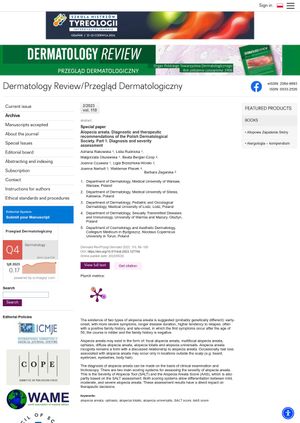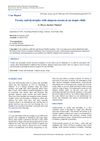Alopecia Areata: Diagnostic and Therapeutic Recommendations of the Polish Dermatological Society, Part 1: Diagnosis and Severity Assessment
January 2023
in “
Przegla̧d dermatologiczny
”
alopecia areata early-onset alopecia areata late-onset alopecia areata focal alopecia areata multifocal alopecia areata ophiasis diffuse alopecia areata alopecia totalis alopecia universalis alopecia areata incognita clinical examination trichoscopy Severity of Alopecia Tool SALT Alopecia Areata Score AAS

TLDR There are two main types of alopecia areata with different severity, and diagnosis is made through clinical examination and trichoscopy, influencing treatment choices.
The paper suggests the existence of two types of alopecia areata, which are likely genetically different: early-onset, characterized by severe symptoms, longer disease duration, higher relapse tendency, and often a positive family history, and late-onset, where the first symptoms appear after the age of 50, with a milder course and negative family history. Alopecia areata can exist in various forms, including focal, multifocal, ophiasis, diffuse, totalis, and universalis. Alopecia areata incognita is a form with a debated relationship to alopecia areata. Sometimes, hair loss associated with alopecia areata may occur only in locations outside the scalp. The diagnosis of alopecia areata can be made based on clinical examination and trichoscopy. The Severity of Alopecia Tool (SALT) and the Alopecia Areata Score (AAS) are the two main scoring systems for assessing the severity of alopecia areata, allowing differentiation between mild, moderate, and severe forms. These assessment results directly influence therapeutic decisions.

